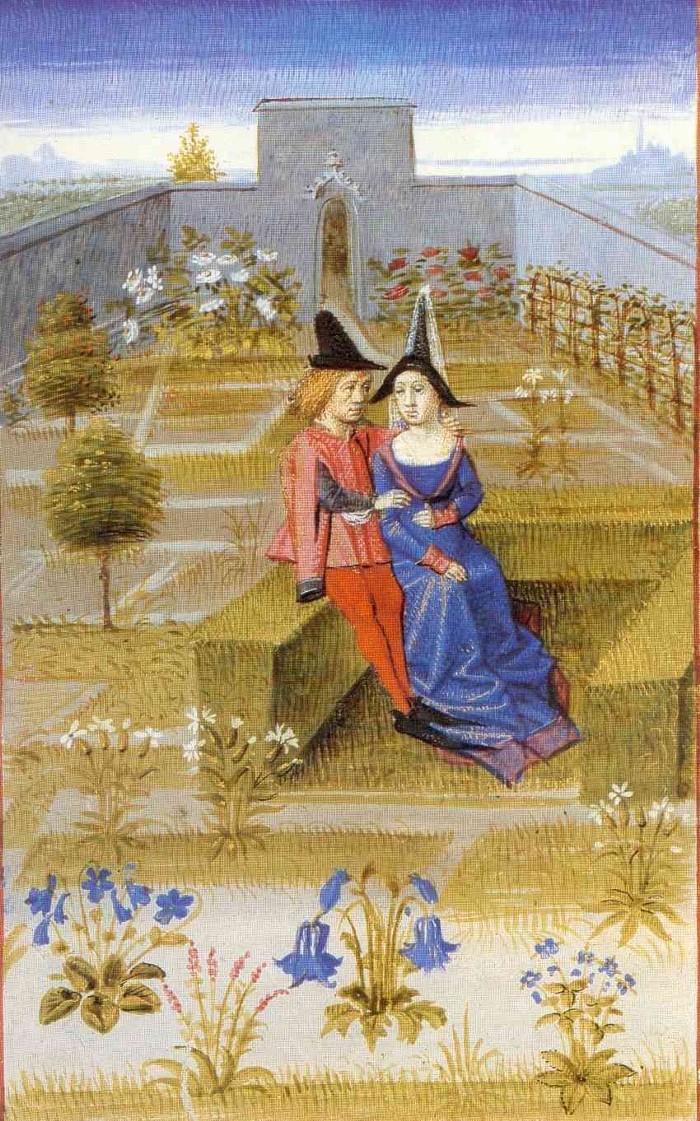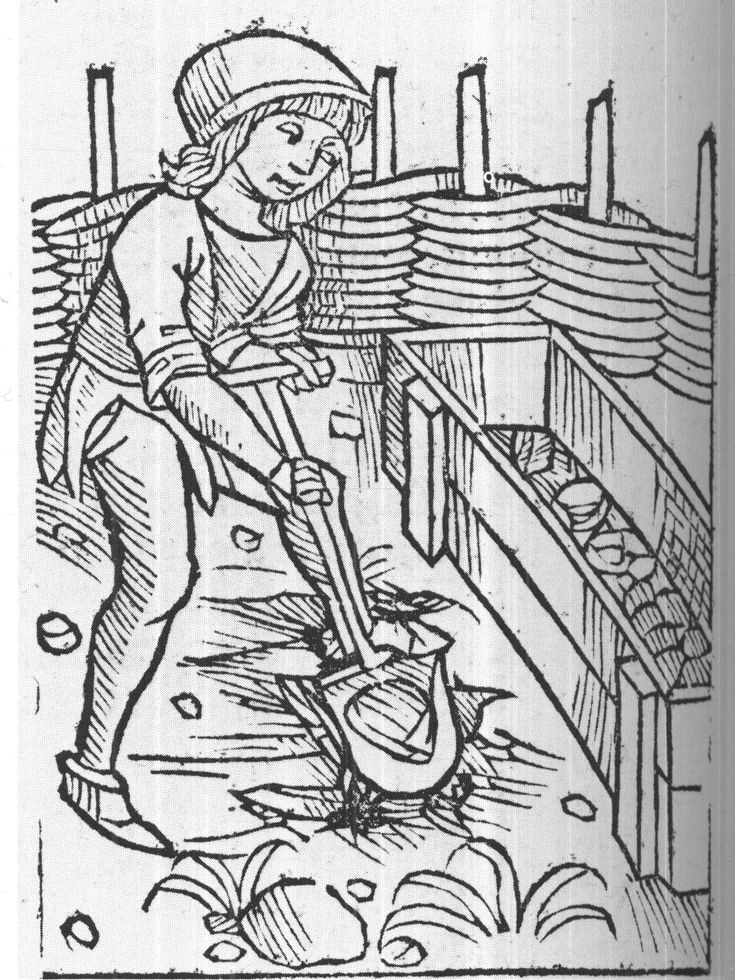 This manuscript illumination by Pietro Crescenzi show two lovers siting on a turf bench inside an enclosed garden. The garden has high walls that provides both protection and privacy. The lawn is divided by numerous paths into rectangular beds with small fruit trees growing in some of them. More trees are espaliered along one wall, and red and white rose bushes grow in the background. In a bed behind and to the right of the couple are lilies and in front are possibly columbine and violets as well as some unidentified others.
This manuscript illumination by Pietro Crescenzi show two lovers siting on a turf bench inside an enclosed garden. The garden has high walls that provides both protection and privacy. The lawn is divided by numerous paths into rectangular beds with small fruit trees growing in some of them. More trees are espaliered along one wall, and red and white rose bushes grow in the background. In a bed behind and to the right of the couple are lilies and in front are possibly columbine and violets as well as some unidentified others.
Benches like this were a common feature of medieval gardens. They were first mentioned by Albertus Magnus, a 13th century Dominican friar and bishop: “Between the beds and the grass a raised turf section must be set up, filled with delightful flowers, and nearly in the centre, suitable for sitting on, where the senses may be refreshed amd where one may rest with pleasure”. Although the lovers in this picture are seated on this bench as Magnus suggests, sometimes figures are shown sitting on the ground and leaning against the side of the bench.
The bench in the picture is U-shaped but benches were usually rectangular, less often cicular or L -shaped. The sides could be made of wattle fencing, wood planks, brick, or stone, filled with rocks and then soil, and topped with grass, sometimes with flowering plants included. Occassionally, as shown here, the sides were also covered with turf. A woodcut by the Crescenzi shows us a workman constructing a bench using wood planks. The bench in the woodcut is rectangular and filled with rocks ready for soil and then grass.

The inclusion of the identifiable plants is probably symbolic. Red roses symbolized the shedding of Christ’s blood while white roses and lilies stood for the chastity of the Virgin with purity added by the lilies. Columbine is associated with the Holy Spirit, violets with spiritual wisdom and the modesty of the Virgin.